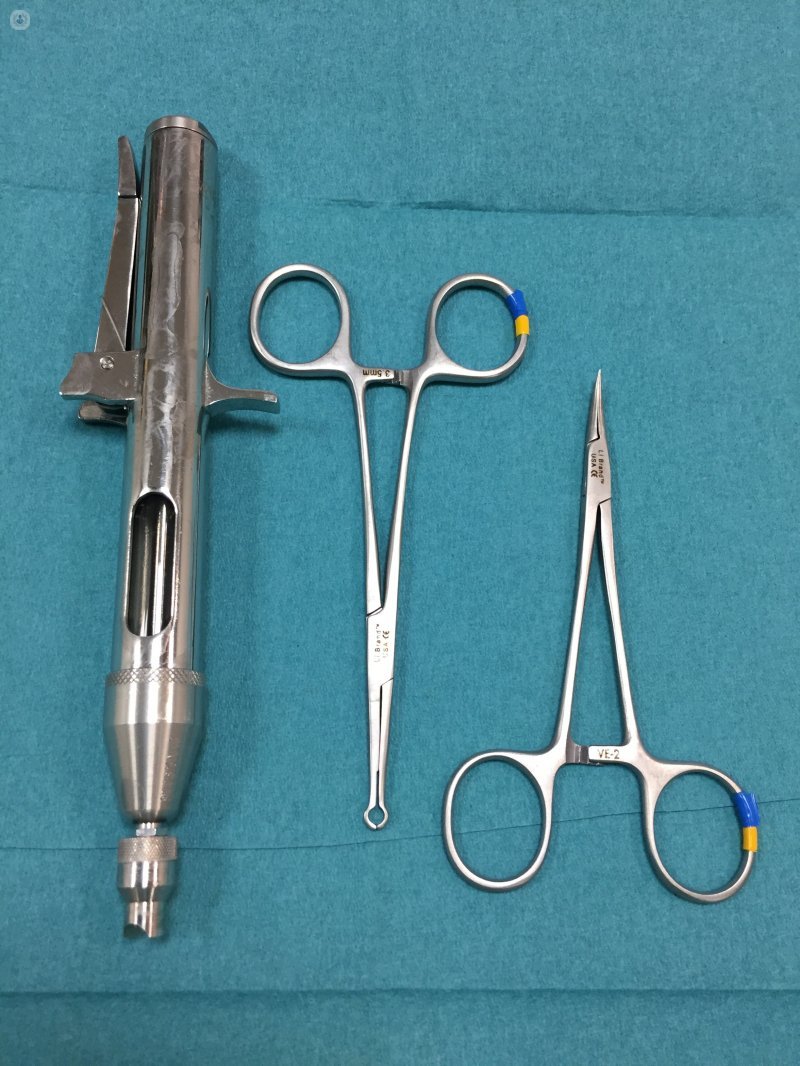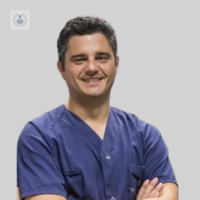Vasectomy no needles and no scalpel
Written by:Vasectomy is the safest method for male contraception. It is a simple, permanent method and is performed under local anesthesia. This surgery is to interrupt the passage of sperm through the vas deferens by occlusion and section thereof. Its effectiveness is 99.5%.

What is no - scalpel vasectomy without needles
No-scalpel vasectomy was developed in 1974 by Dr.. Shunqiang Li in Sichuan Province, China.
No-scalpel vasectomy is done through two instruments specifically designed to attract the vas deferens, ejaculatory duct excretory and each testicle, the clamp ring. This tool securely holds deferent from outside the scrotum, without injure. The other element is a sharp curve and mosquito clamp to puncture the skin dilate and separate the deferential vessels in your blood vessels, thus reducing the chances of causing a hematoma.
Currently, this procedure is considered the best (Gold Standard) for the practice of vasectomy by the prestigious American Association of Urology .
Advances in vasectomy
The no-scalpel technique has become standard practice in more than 40 countries. The main novelty is that currently there is a method that removes the needles during application of anesthesia through the spray gun. As a result, the inconvenience that come with traditional anesthesia applied with needles greatly decreases. Thus avoiding touching the nerves deferential testicular nerves are anesthetized.
Advantages of NSV
This minimally invasive technique provides a much smaller percentage of complications than traditional vasectomy. It presents 10 times less bruising, infections and other complications.
With no-scalpel vasectomy patients suffer less pain and bleeding during and after surgery. It also can perform 50% faster and the men who undergo vasectomy can resume sexual activity more quickly than against the traditional method.
Patients have only minimal wound, hardly noticeable to the naked eye, and its closure is done much faster than with the two incisions of conventional vasectomy.
Results no - scalpel vasectomy
The contraceptive effectiveness of vasectomy is from 99 to 99.5%, as it interrupts the passage of sperm by their natural ducts.
After performing vasectomy they continue having sperm in the seminal tract. It takes 20 to 25 ejaculations to completely expel all the sperm.
During this period (approximately 2 months) is required the use of other contraceptive methods.
In less than 0.4% of cases a spontaneous recanalization of the vas deferens may occur, this complication appearing during the first six months in most cases.
Risks of Vasectomy
Vasectomy is a safe technique that made with the technique without needles and bladeless, have much lower rate of complications than with traditional technique. However, there are a number of risks and complications that the patient should know:
- Some patients may be allergic to local anesthetics.
- Appearance of testicular swelling or inflammation that may require treatment with anti-inflammatory and usually go away within a few days.
- It may appear a hematoma between 0.5-1% of cases.
- Infection is rare and if it appears usually subsides with antibiotic treatment and in rare cases may require another surgery.
- Manifestation of a nodule (sperm granuloma) at the site of vasectomy.
It can cause pain usually disappears with anti-inflammatory. Rarely it requires surgery under local anesthesia, to solve it.
Regarding sexuality, vasectomy does not involve changes in the sexual aspect.
In cases where the patient wishes to return to its initial position, vasectomy can be reversed by microsurgery (vasovasostomy), even though it is noteworthy that this is a much more expensive surgery.


